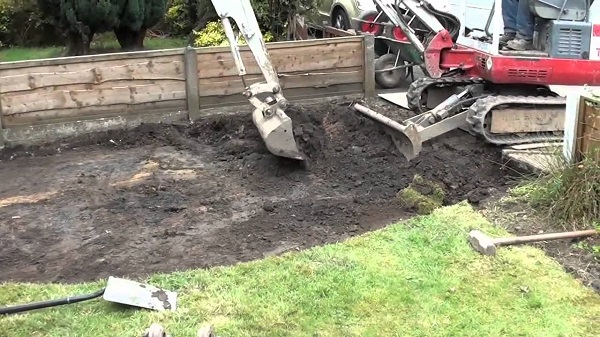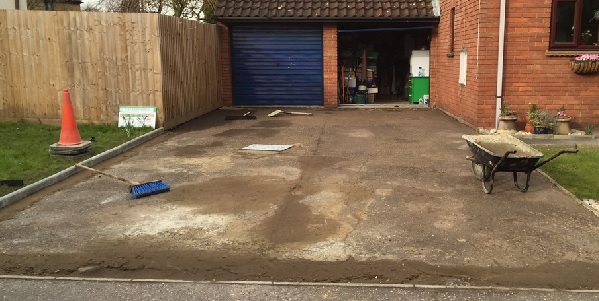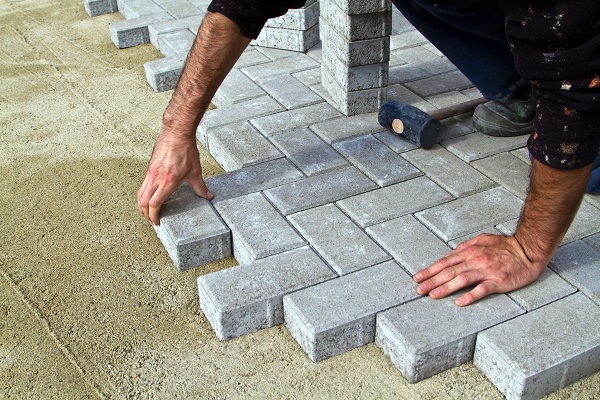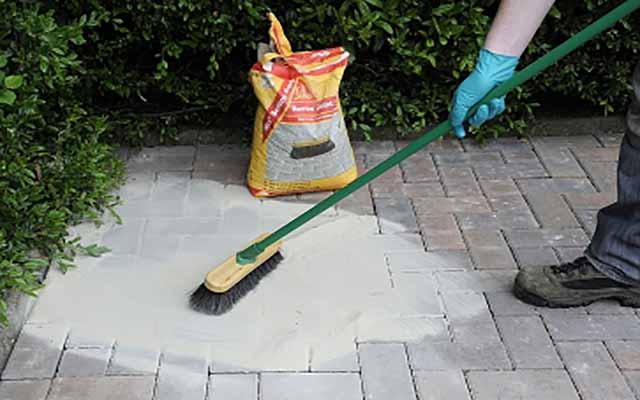If you want to block pave your own driveway here is a step by step guide to help you, covering all aspects of the process from start to finish.
How to Prepare to Block Pave Your Driveway
Before you start you should buy everything that you need, and it can also be useful to create a block paving plan beforehand using a free online tool. If you don’t want to create a block paving plan you can create a site layout plan so that you know where the edge course will go. This will also make it easier for you to calculate how many blocks you will need.
Start with Excavation
The first thing that you need to do is dig out your driveway and dispose of the soil. Many people hire a digger for this, and they also hire a skip to remove the dirt to a licensed site.

The typical excavation depth for a domestic driveway is between 200 and 250mm, based on a 100mm sub-base, a 50mm block and a 40mm sandbed. If you are uncertain, remember that it is better to dig too deeply than have a shallow space, so go for the higher measurement.
If you need to install drainage you should do this right after the excavation, as it will be impossible to do once the sub-base is laid. If you do install drainage, make sure to use concrete to protect it.
Laying a Sub-base
The next thing that you need to do is spread, compact and level a sub-base that is at least 100mm thick. The sub-base will need to be graded to match the profile of the finished paving so that they work well together, and there shouldn’t be any gaps or spaces in the sub-base.

Laying Edge Courses and Kerbs
You can set up tight string lines as a guide level for kerbs and edge courses so that they are perfectly straight. Start by laying the kerb and then the edge courses.
Begin the Laying Course
Next you need to spread, level and compact some laying course sand. The sand should be between 25mm and 40mm deep.
Start Block Laying
The next part of the process is the block laying. Lay the blocks in a planned order to make sure that they all fit perfectly, and you can use another string line to make sure that they are perfectly straight.

Cut the Edges in
You can use a bench mounted saw to file the edges off so that they fit well, or you can use a block splitter if you have experience with them.
Jointing
The last thing that you need to do is jointing. Spread kiln-dried sand all over the surface of the blocks, and sweep it into the joints using a soft brush. You can then compact the paving with a vibrating plate compactor up to six times.

